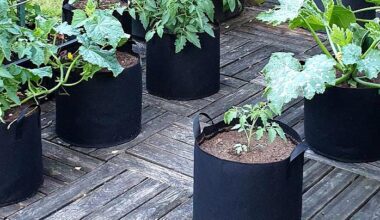What a joy it is to pick the fruits of your own garden, on the tree that you have been growing yourself for several years! Contrary to what some people think, it’s not that difficult.
Here are the best places to fruit trees directly from your home!
Contents
Choosing the ideal location for your fruit tree
In order to choose the ideal location for your trees, it is important to consider the following criteria:
- Fruit trees all have different sizes. Before planting, select a cultivar that will fit the dimensions of your garden. Also take into consideration the growth habit which differs according to the species. For example, a pear tree has a uniform and orderly growth habit, but will become much larger at maturity than a dwarf apple tree, which has a more irregular but more compact growth habit.
- Although these trees thrive in many types of soils, it is essential to provide adequate drainage, since most do not tolerate wet areas. In fact, if your soil is heavy, some species, such as apricot, cherry, nectarine and peach, would benefit from being planted in raised cultivation areas to ensure better root establishment.
- Choose the sunniest location in your yard, as most fruit growers are very fond of it. A minimum of 8 hours of sunshine will guarantee an optimum harvest.
- Closed corners of the garden are to be avoided, because air circulation is less present there, creating a niche for phytosanitary problems, for example: the development of fungal diseases. It will also need a well-cleared place to give you the necessary space for its maintenance. Many planter boxes make the mistake of planting fruit trees too close to their facilities, limiting their freedom of movement and causing inconvenience when spraying pesticides that stain walls and windows.
Choosing the location of your fruit trees
A fruit grower needs a sunny spot, sheltered from the wind and big enough to ensure a yield of both quality and quantity of fruit. The type of fruit tree you will choose depends mainly on the configuration of your garden. You will have to take into account :
- Climate: there will not be the same plantations between the South and the North.
- Space: You won’t be able to install a 1.5 feets apple tree on your balcony and a mini pear tree will feel lonely in the middle of your big garden.
- Brightness: Some species cannot survive without sunshine while others tolerate the lack of light very well.
- Soil: it is preferable to have a well drained and amended soil.
Once the four previous points have been studied, you can choose the type of fruit trees best suited to your green space.
The different types of fruit trees
fruit trees produce pome and stone fruits: apple, pear, plum, cherry, apricot, peach, nectarine, persimmon, nashi? Several forms exist, it will be necessary to be vigilant on the distance of plantation and the height of picking of the fruits.
The palisaded forms
The fruit trees known as “trellised” are fruit trees whose branches are attached to a support (stretched wires, walls, fences, …). As a result, these fruit trees take up little space and are particularly suitable for small gardens, they are also very productive. By pruning them regularly, you will keep this trellis shape and ensure optimal fruit production.
The free forms
Free-form fruit trees require little pruning, unlike their trellised counterparts. There are two types, distinguished by their adult height and planting distance.
- fruit trees in spindle shape. In cattail or cup shape, these fruit trees become small trees (0.5 to 1.5 feets depending on the fruit tree) with a trunk of 20 to 25 inches. You will then be able to pick your fruit with ease. These fruit trees require a planting distance of 1 to 1.5 feets depending on the species to guarantee their full blooming.
- fruit trees on stem. Sold on trunk (0.5 feets) or half stem (0.5 feets), these fruit trees can reach 1.5 to 2.5 feets in height. Their clear trunk allows you to walk underneath, and the size of the canopy allows you to obtain larger harvests. To ensure sufficient space, the planting distance should be 2 to 3 feets depending on the species.
You can now choose the fruit trees best suited to your green space to have quality fruit in quantity.
The best time to grow a fruit tree
Generally, trees should be planted either in the spring, after the snow has melted (if you have any in your area), approximately between April 20 and May 10, or in the fall before the first snowfall, between October 15 and November 20. This applies to bare-rooted shrubs. For potted trees, you can plant during the summer, but the ideal remains spring.
Summary
When planting a fruit tree, it is important to respect the soil. “Many people make a hole and fill it with ‘good soil’ thinking that it will be better for the tree when it is the other way around.
It will just create a kind of well that will accumulate water, which will result in drowning the tree if it is in clay soil. It’s better to put compost on the surface and not in the planting hole”. We explain how to choose the ideal location for your fruit tree according to your land.









